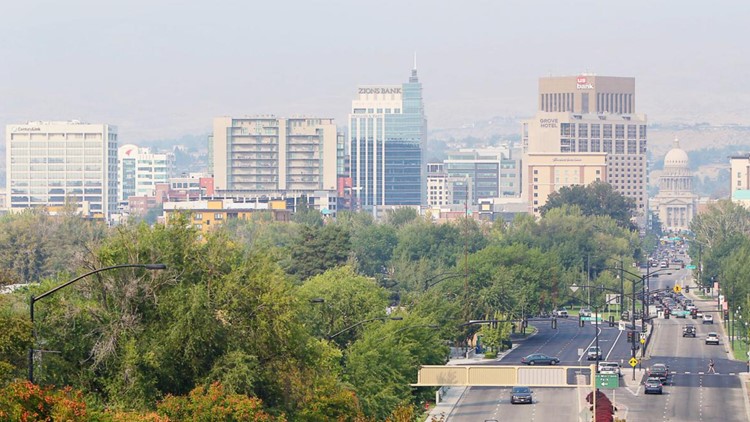BOISE, Idaho — This article originally appeared in the Idaho Press.
Idahoans, especially in the southern part of the state, should expect to remain in a drought this year, climate experts said in a media call this week.
There was optimism earlier this year the state could have normal snowpack after a series of snowstorms in December and early January. But a high-pressure ridge parked off the West Coast has largely kept moisture away from the entire Pacific Northwest region.
“Reservoir levels in southern and eastern Oregon and southern Idaho are near historic lows,” Britt Parker, NOAA National Integrated Drought Information System regional drought information coordinator, said.
Over 80% of the Gem State is currently experiencing drought, according to the U.S. Drought Monitor. This time last year, slightly less than 25% of Idaho was experiencing drought.
However, last year’s drought was unexpected. Snowpack should have been adequate but last spring and summer were extremely dry and hot.
Last summer was the hottest on record in Boise, the Idaho Press previously reported, with 18 days where temperatures hit or exceeded 100 degrees.
{div class=”subscriber-only”}Regionally, around 74% of the entire Pacific Northwest is in drought. Over 18% is in extreme or exceptional drought conditions, the highest levels.{/div}
“This reflects long-term precipitation deficits for much of the interior northwest,” Parker said.
Dry conditions across the state have been driven by La Niña, which has been pushing storms north and east of Idaho, the Idaho Press previously reported. La Niña is a cooling period of the ocean’s surface that impacts rainfall and in turn affects winter weather around the world.
Other Pacific Northwest states are also experiencing dryness. Over 90% of Oregon is in drought but Washington is faring much better, with slightly more than 50% of the state experiencing drought conditions.
There isn’t any indication climate change is playing a big role, said Larry O’Neill, from the Oregon Climate Office. But it is very unusual to get three years in a row that are very dry in Oregon.
What goes on in the rest of the Pacific Northwest can also affect Idaho. For example, drought can be a contributing factor to wildfires. Last year, the smoke from wildfires around the western United States impacted air quality in the Treasure Valley and Idaho as a whole.
“Not only are water supply issues going to be more acute … but we’re starting to get concerned about the general dryness of the landscape and what it means for wildfire risk,” O’Neill said. “In central Oregon fire districts, they’re projecting an above normal potential for wildland fire. This is really concerning.”
The Significant Wildland Fire Potential Outlook shows above-normal chances for wildfire for a portion of central Oregon in May and June. In Idaho, chances appear normal.
For that area of central Oregon, the concern for May pertains to backyard burning and project fires that might get out of hand.
The projection for central Oregon is because of ongoing extreme drought conditions and the prediction for a drier than normal drier-than-normal spring.
In terms of temperature and precipitation, this spring should look pretty normal in Boise, as the area typically sees high temperatures in the 50s and 60s and roughly 3-5 inches of rain, according to the National Weather Service.
Heading into summer, the state is predicted to have below-normal precipitation and higher-than-normal temperatures, the Idaho Press previously reported.
This article originally appeared in the Idaho Press, read more on IdahoPress.com.
Watch more Local News:
See the latest news from around the Treasure Valley and the Gem State in our YouTube playlist:



